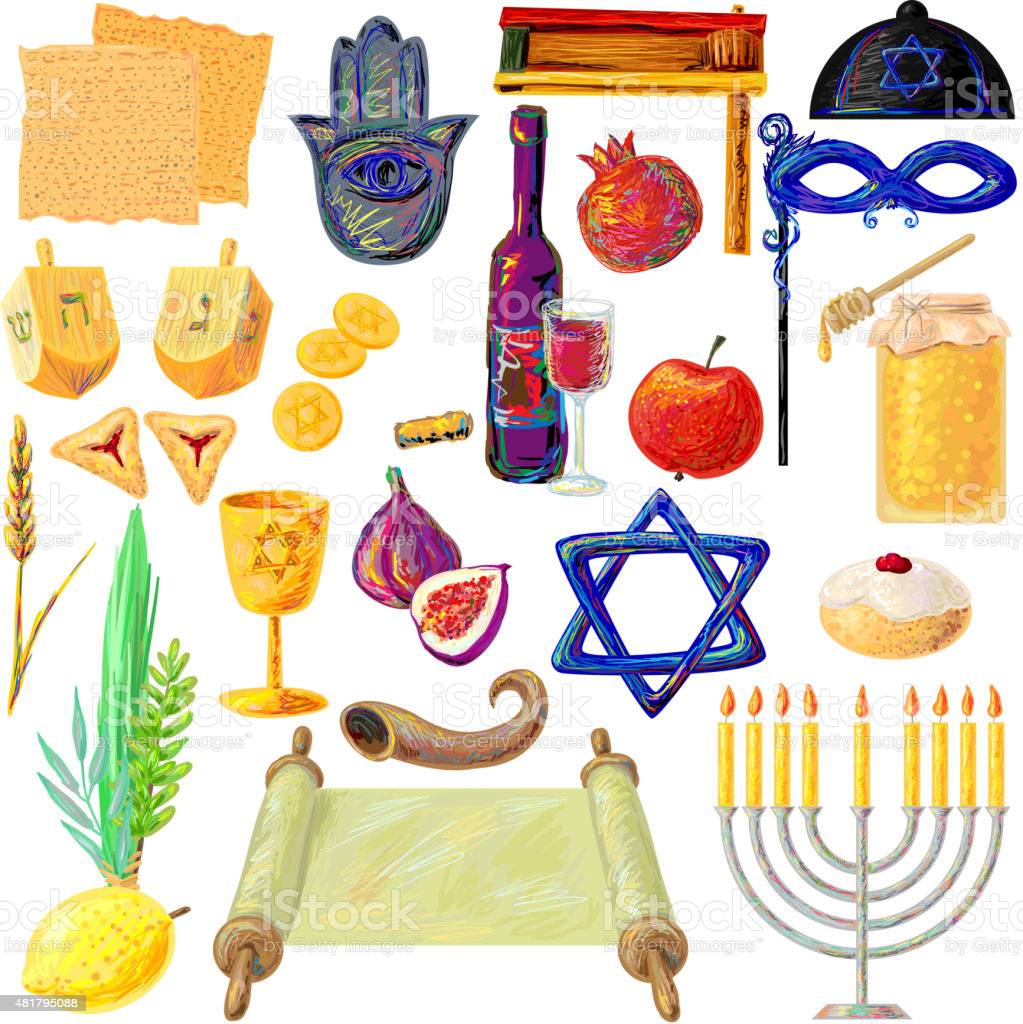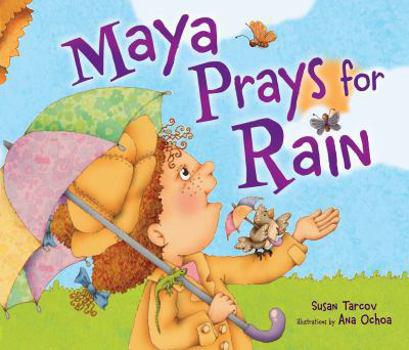
(לד) דַּבֵּ֛ר אֶל־בְּנֵ֥י יִשְׂרָאֵ֖ל לֵאמֹ֑ר בַּחֲמִשָּׁ֨ה עָשָׂ֜ר י֗וֹם לַחֹ֤דֶשׁ הַשְּׁבִיעִי֙ הַזֶּ֔ה חַ֧ג הַסֻּכּ֛וֹת שִׁבְעַ֥ת יָמִ֖ים לַיהוה׃(לה) בַּיּ֥וֹם הָרִאשׁ֖וֹן מִקְרָא־קֹ֑דֶשׁ כׇּל־מְלֶ֥אכֶת עֲבֹדָ֖ה לֹ֥א תַעֲשֽׂוּ׃(לו) שִׁבְעַ֣ת יָמִ֔ים תַּקְרִ֥יבוּ אִשֶּׁ֖ה לַיהוה בַּיּ֣וֹם הַשְּׁמִינִ֡י מִקְרָא־קֹ֩דֶשׁ֩ יִהְיֶ֨ה לָכֶ֜ם וְהִקְרַבְתֶּ֨ם אִשֶּׁ֤ה לַֽיהוה עֲצֶ֣רֶת הִ֔וא כׇּל־מְלֶ֥אכֶת עֲבֹדָ֖ה לֹ֥א תַעֲשֽׂוּ׃
(34) Say to the Israelite people: On the fifteenth day of this seventh month there shall be the Feast of Booths to יהוה, [to last] seven days.(35) The first day shall be a sacred occasion: you shall not work at your occupations;(36) seven days you shall bring offerings by fire to יהוה. On the eighth day you shall observe a sacred occasion and bring an offering by fire to יהוה; it is a gathering: you shall not work at your occupations.
(לה) בַּיּוֹם֙ הַשְּׁמִינִ֔יעֲצֶ֖רֶת תִּהְיֶ֣ה לָכֶ֑ם כׇּל־מְלֶ֥אכֶת עֲבֹדָ֖ה לֹ֥א תַעֲשֽׂוּ׃(לו) וְהִקְרַבְתֶּ֨ם עֹלָ֜ה אִשֵּׁ֨ה רֵ֤יחַ נִיחֹ֙חַ֙ לַֽיהוה פַּ֥ר אֶחָ֖ד אַ֣יִל אֶחָ֑ד כְּבָשִׂ֧ים בְּנֵי־שָׁנָ֛ה שִׁבְעָ֖ה תְּמִימִֽם׃(לז) מִנְחָתָ֣ם וְנִסְכֵּיהֶ֗ם לַפָּ֨ר לָאַ֧יִל וְלַכְּבָשִׂ֛ים בְּמִסְפָּרָ֖ם כַּמִּשְׁפָּֽט׃(לח) וּשְׂעִ֥יר חַטָּ֖את אֶחָ֑ד מִלְּבַד֙ עֹלַ֣ת הַתָּמִ֔יד וּמִנְחָתָ֖הּ וְנִסְכָּֽהּ׃(לט) אֵ֛לֶּה תַּעֲשׂ֥וּ לַיהוה בְּמוֹעֲדֵיכֶ֑ם לְבַ֨ד מִנִּדְרֵיכֶ֜ם וְנִדְבֹתֵיכֶ֗ם לְעֹלֹֽתֵיכֶם֙ וּלְמִנְחֹ֣תֵיכֶ֔ם וּלְנִסְכֵּיכֶ֖ם וּלְשַׁלְמֵיכֶֽם׃(א) וַיֹּ֥אמֶר מֹשֶׁ֖ה אֶל־בְּנֵ֣י יִשְׂרָאֵ֑ל כְּכֹ֛ל אֲשֶׁר־צִוָּ֥ה יהוה אֶת־מֹשֶֽׁה׃ {פ}
(35) On the eighth day you shall hold a gathering; you shall not work at your occupations.(36) You shall present a burnt offering, an offering by fire of pleasing odor to יהוה; one bull, one ram, seven yearling lambs, without blemish;(37) the meal offerings and libations for the bull, the ram, and the lambs, in the quantities prescribed;(38) and one goat for a sin offering—in addition to the regular burnt offering, its meal offering and libation.(39) All these you shall offer to יהוה at the stated times, in addition to your votive and freewill offerings, be they burnt offerings, meal offerings, libations, or offerings of well-being.(1) So Moses spoke to the Israelites just as יהוה had commanded Moses.
(יז) וַיַּֽעֲשׂ֣וּ כׇֽל־הַ֠קָּהָ֠ל הַשָּׁבִ֨ים מִן־הַשְּׁבִ֥י ׀ סֻכּוֹת֮ וַיֵּשְׁב֣וּ בַסֻּכּוֹת֒ כִּ֣י לֹֽא־עָשׂ֡וּ מִימֵי֩ יֵשׁ֨וּעַ בִּן־נ֥וּן כֵּן֙ בְּנֵ֣י יִשְׂרָאֵ֔ל עַ֖ד הַיּ֣וֹם הַה֑וּא וַתְּהִ֥י שִׂמְחָ֖ה גְּדוֹלָ֥ה מְאֹֽד׃(יח) וַ֠יִּקְרָ֠א בְּסֵ֨פֶר תּוֹרַ֤ת הָאֱלֹהִים֙ י֣וֹם ׀ בְּי֔וֹם מִן־הַיּוֹם֙ הָֽרִאשׁ֔וֹן עַ֖ד הַיּ֣וֹם הָאַחֲר֑וֹן וַיַּֽעֲשׂוּ־חָג֙ שִׁבְעַ֣ת יָמִ֔ים וּבַיּ֧וֹם הַשְּׁמִינִ֛י עֲצֶ֖רֶת כַּמִּשְׁפָּֽט׃ {פ}
(17) The whole community that returned from the captivity made booths and dwelt in the booths—the Israelites had not done so from the days of Joshua son of Nun to that day—and there was very great rejoicing.(18) Ezra read from the scroll of the Teaching of God each day, from the first to the last day. They celebrated the festival seven days, and there was a gathering on the eighth, as prescribed.
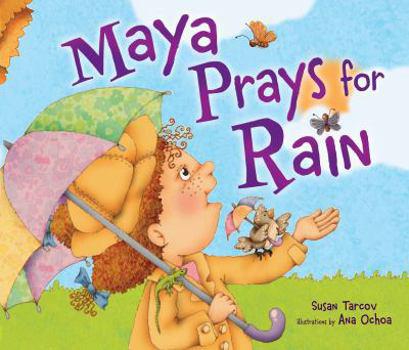
(א)עצרת הוא. עָצַרְתִּי אֶתְכֶם אֶצְלִי; כְּמֶלֶךְ שֶׁזִּמֵּן אֶת בָּנָיו לִסְעוּדָה לְכָךְ וְכָךְ יָמִים, כֵּיוָן שֶׁהִגִּיעַ זְמַנָּן לִפָּטֵר, אָמַר, בָּנַי בְּבַקָּשָׁה מִכֶּם עַכְּבוּ עִמִּי עוֹד יוֹם אֶחָד, קָשָׁה עָלַי פְּרֵדַתְכֶם:
(1) עצרת הוא — The word is derived from the root עצר “to hold back” and suggests: I keep you back with Me one day more. It is similar to the case of a king who invited his children to a banquet for a certain number of days. When the time arrived for them to take their departure he said, “Children, I beg of you, stay one day more with me; it is so hard for me to part with you!” (cf. Rashi on Numbers 29:36 and Sukkah 55b).
(ג) וּשְׁאַבְתֶּם־מַ֖יִם בְּשָׂשׂ֑וֹן מִמַּעַיְנֵ֖י הַיְשׁוּעָֽה׃
(3) Joyfully shall you draw water from the fountains of triumph,
Edited by Martin Cohen
From Siddur Lev Shalem
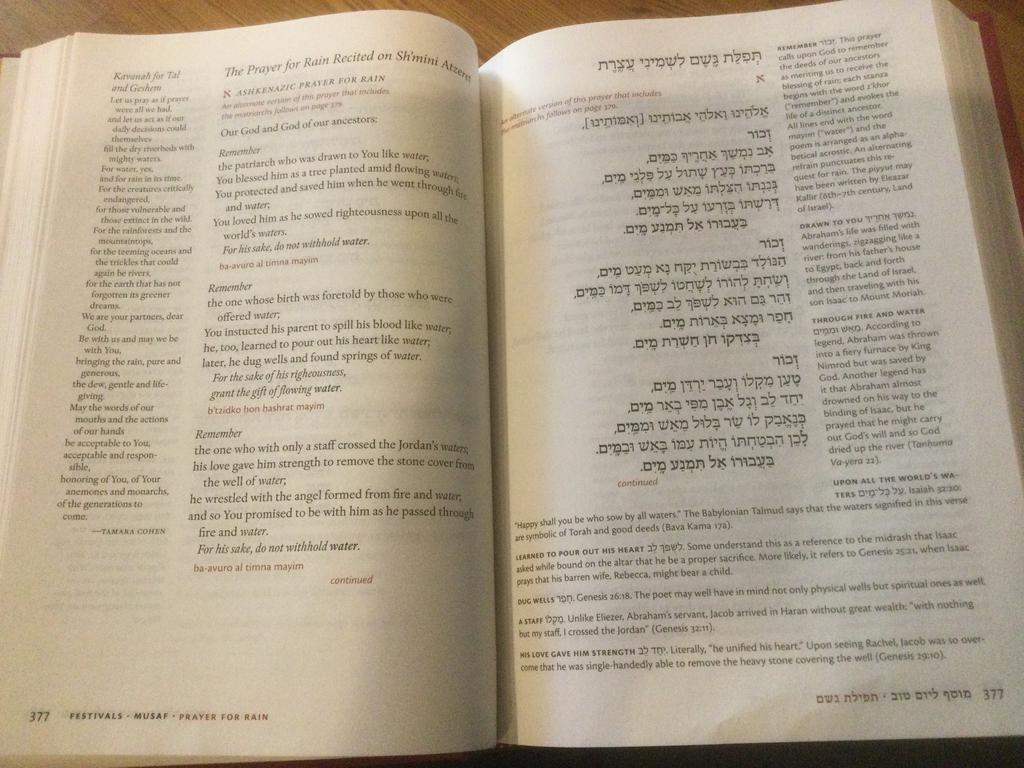
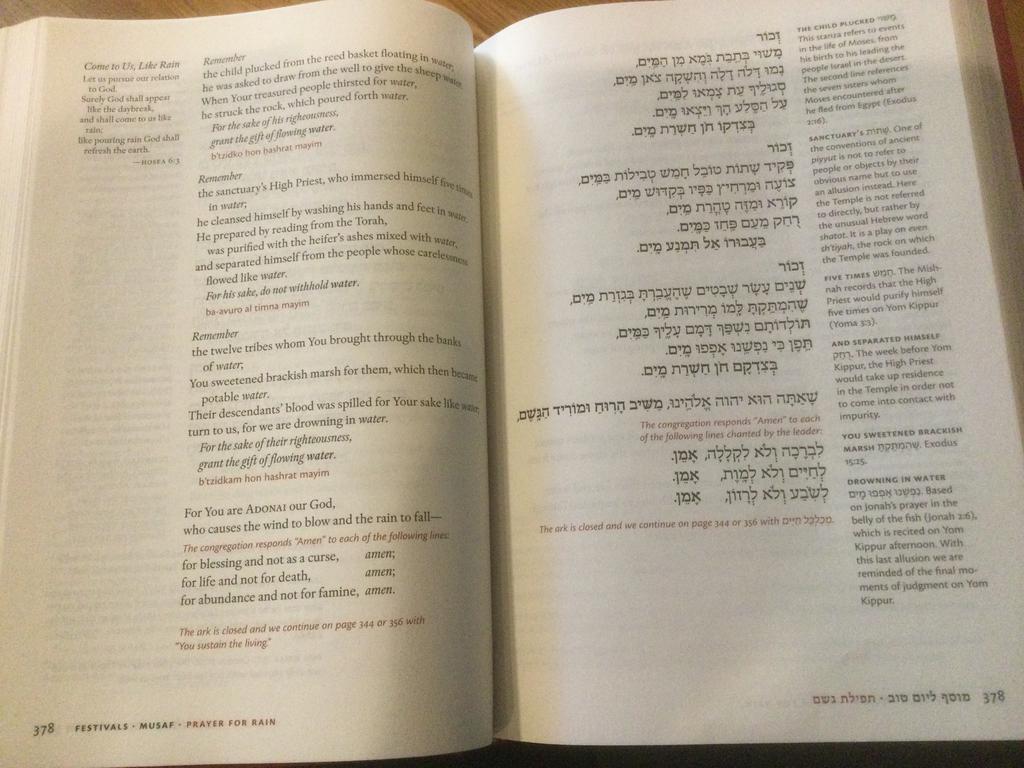
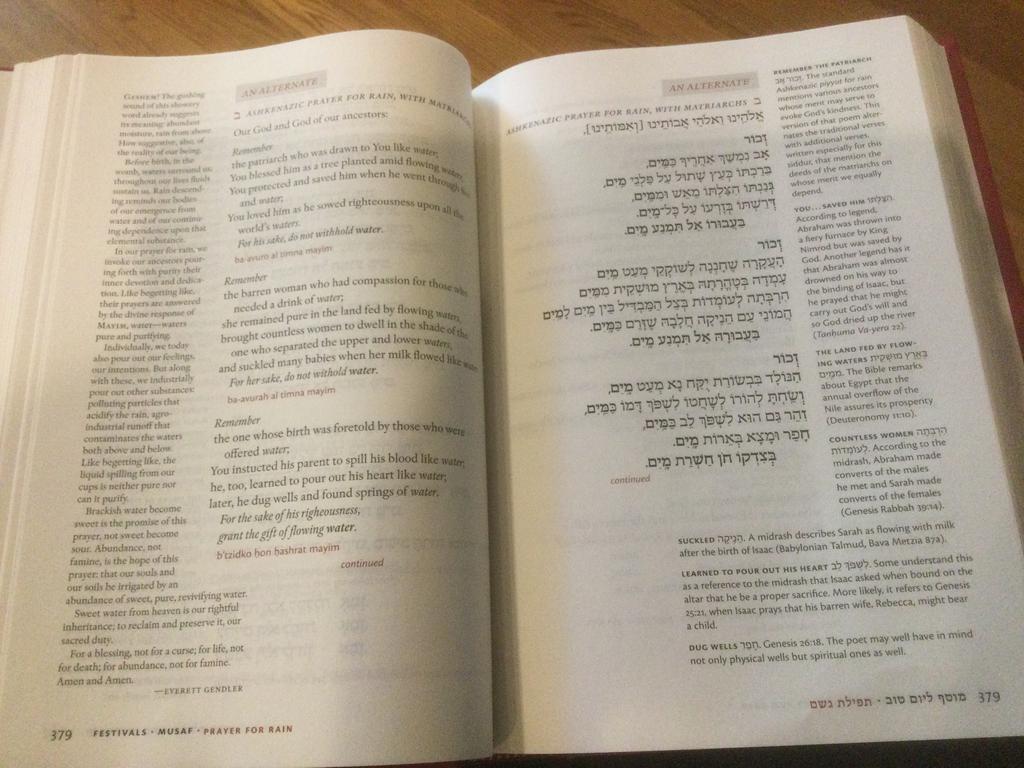
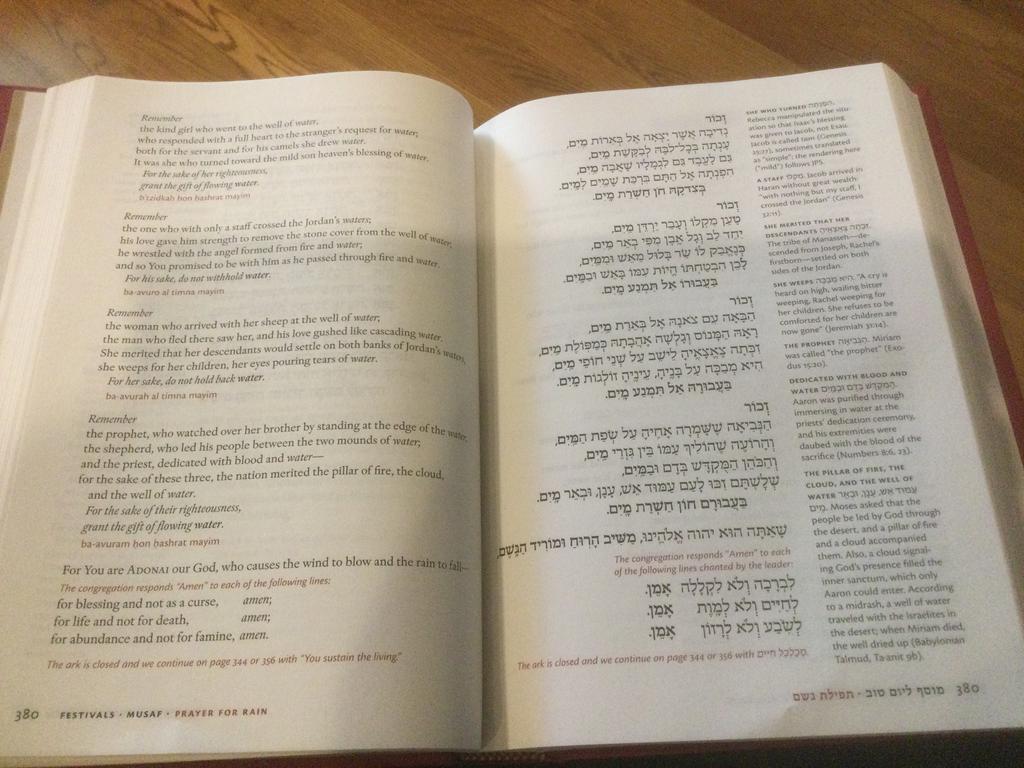
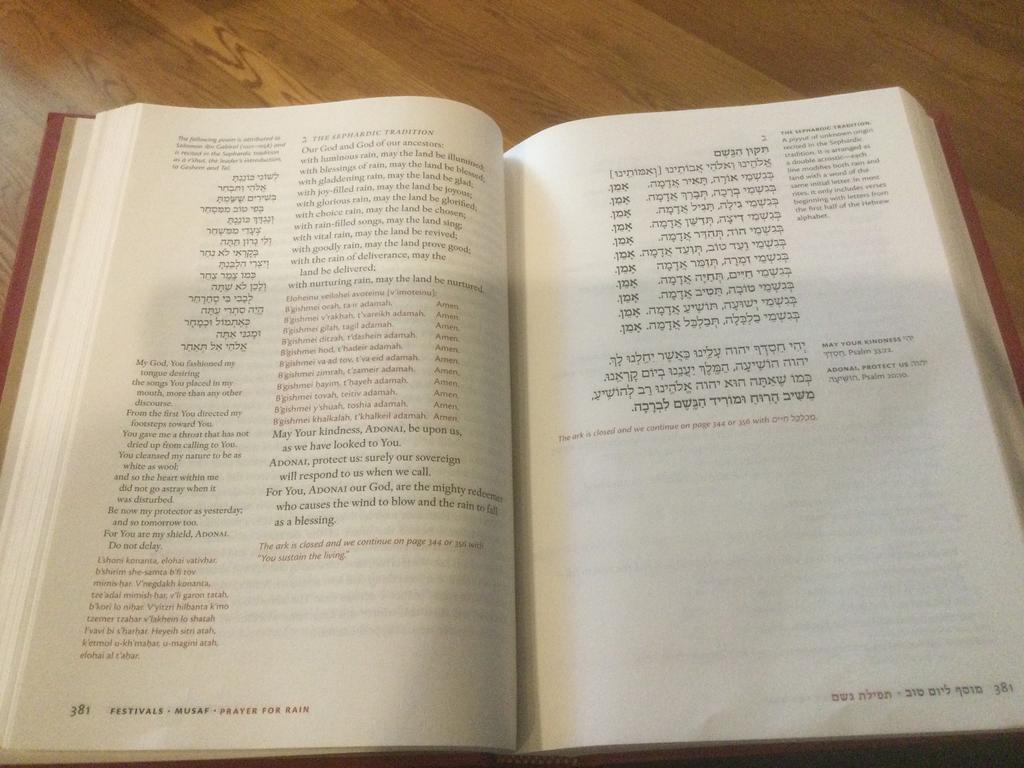
Writers of the history
Stand with me
Look into my eyes and see
People go away but never say goodbye
[Verse 2]
Someone stole the moon tonight
Took my lightEverything is black and white
Who's the fool who told you boys don't cry?
[Pre-Chorus]
Hours and hours and flowers
Life is no game for the cowards
Why does time go wild
Every day I'm losing my mind
Holding on in this mysterious ride
[Chorus]
Dancing in the storm
We got nothing to hide
Take me home
And leave the world behind
And I promise you that never again
I'm still wet from this October rain
October rain
Living in a fantasy
Ecstasy
Everything's meant to be
We shall pass but love will never die
[Pre-Chorus]
Hours and hours and flowers
Life is no game for the cowards
Why does time go wild
Every day I'm losing my mind
Holding on in this mysterious ride
[Chorus]
Dancing in the storm
We got nothing to hide
Take me home
And leave the world behind
And I promise you that never again
I'm still wet from this October rain
October rain
October rain
[Outro]
לא נשאר אוויר לנשום
אין מקום
אין אותי מיום ליום
כולם ילדים טובים אחד אחד




